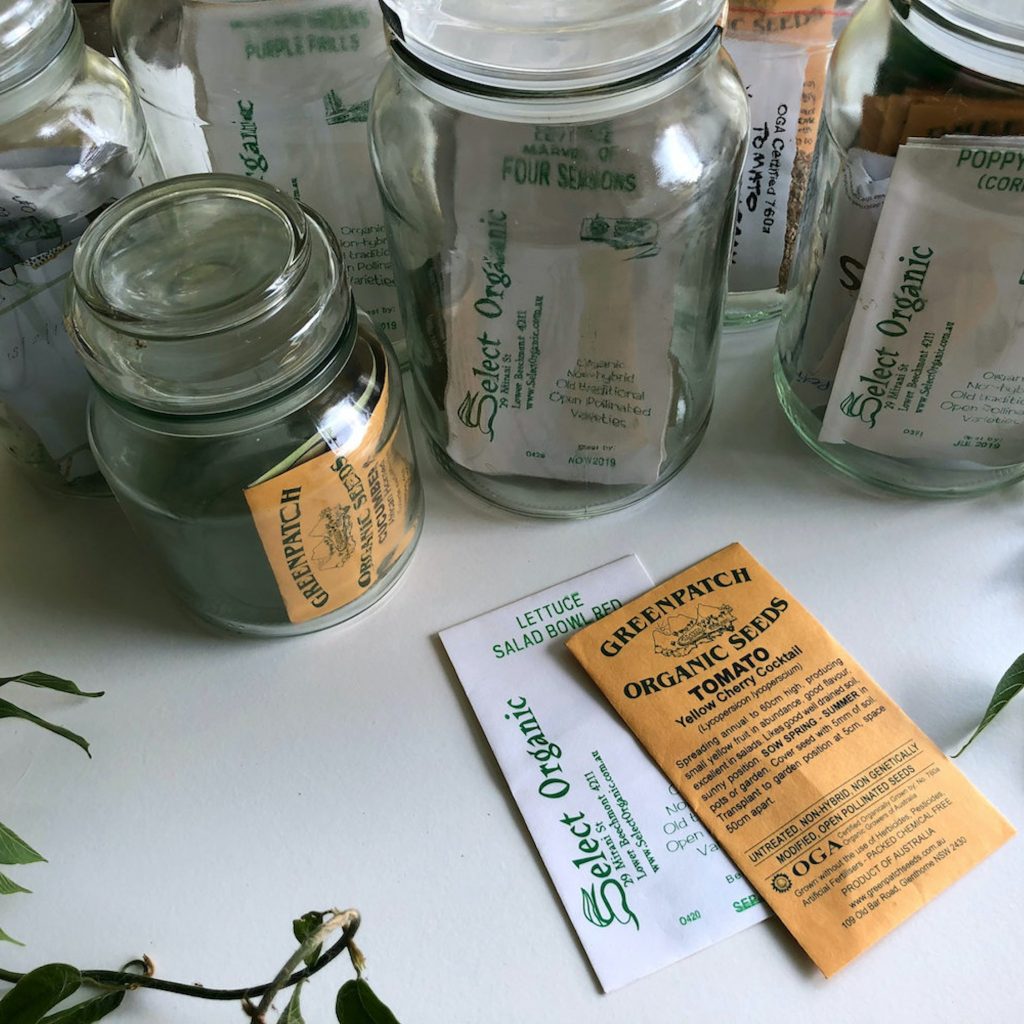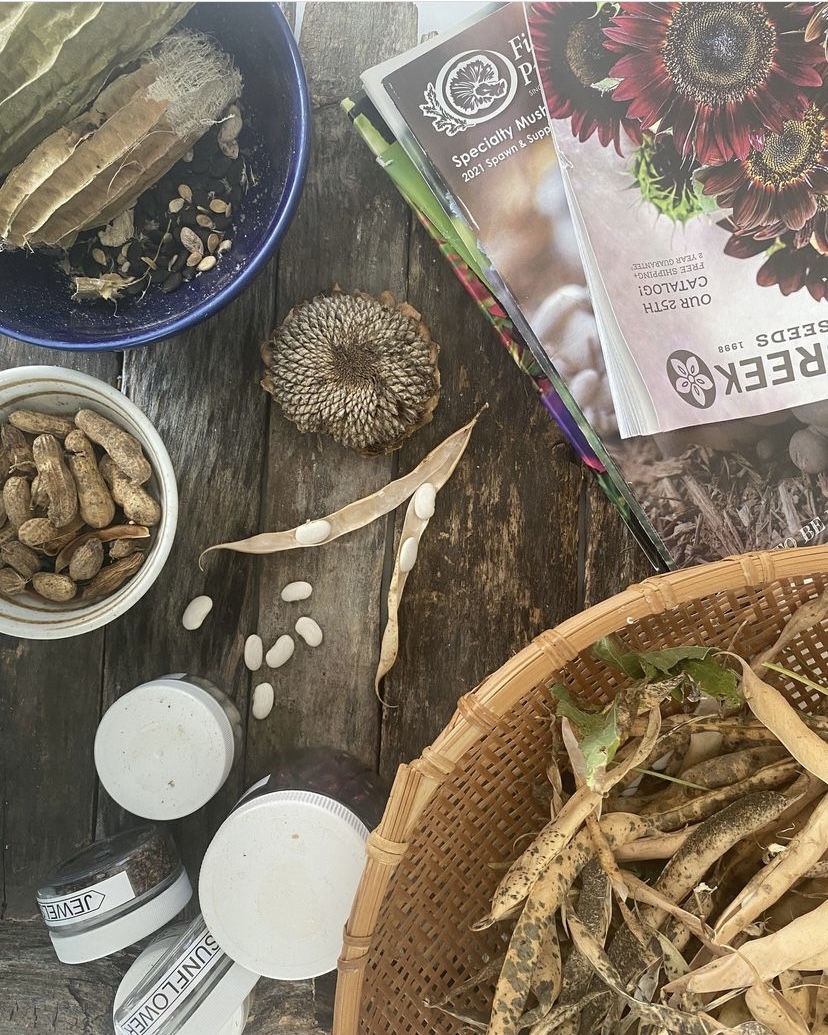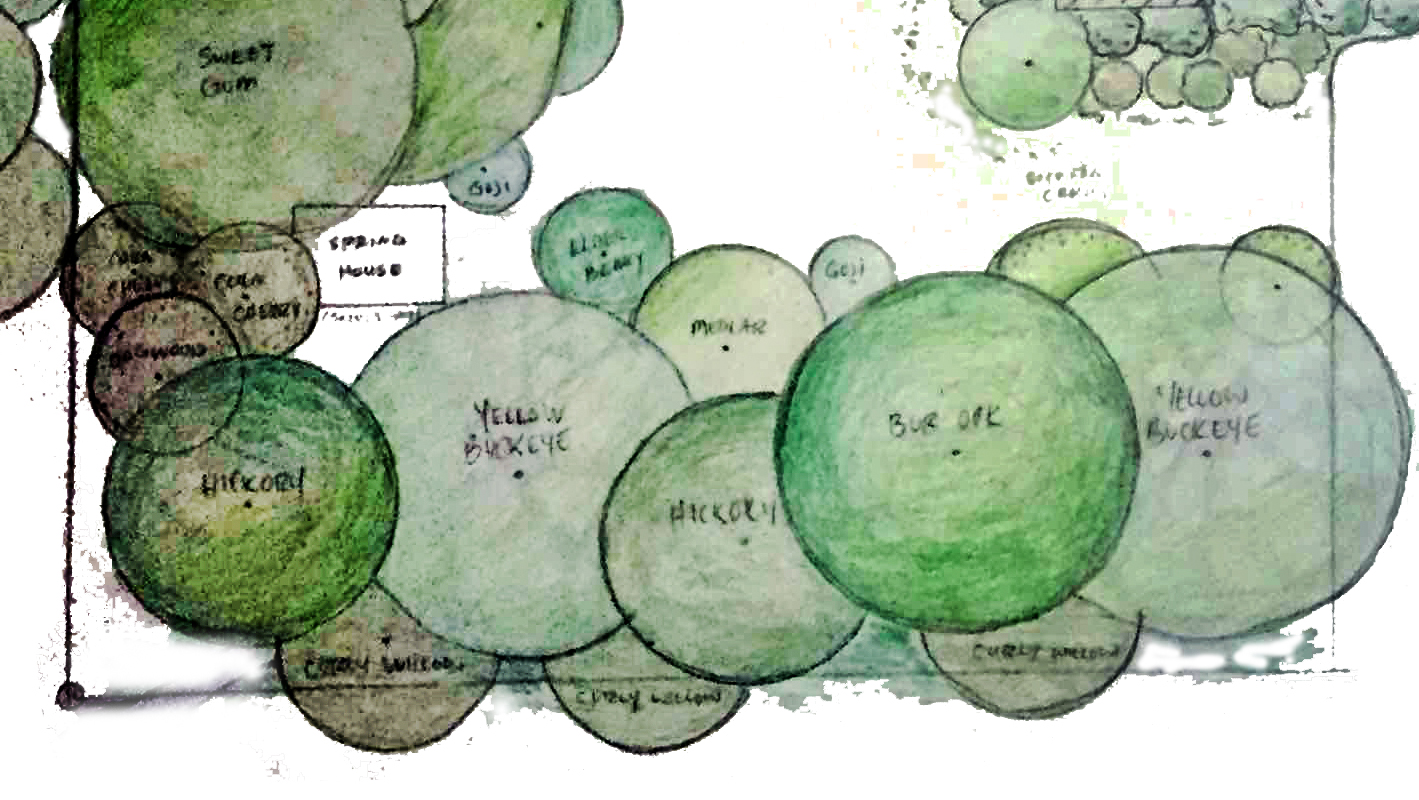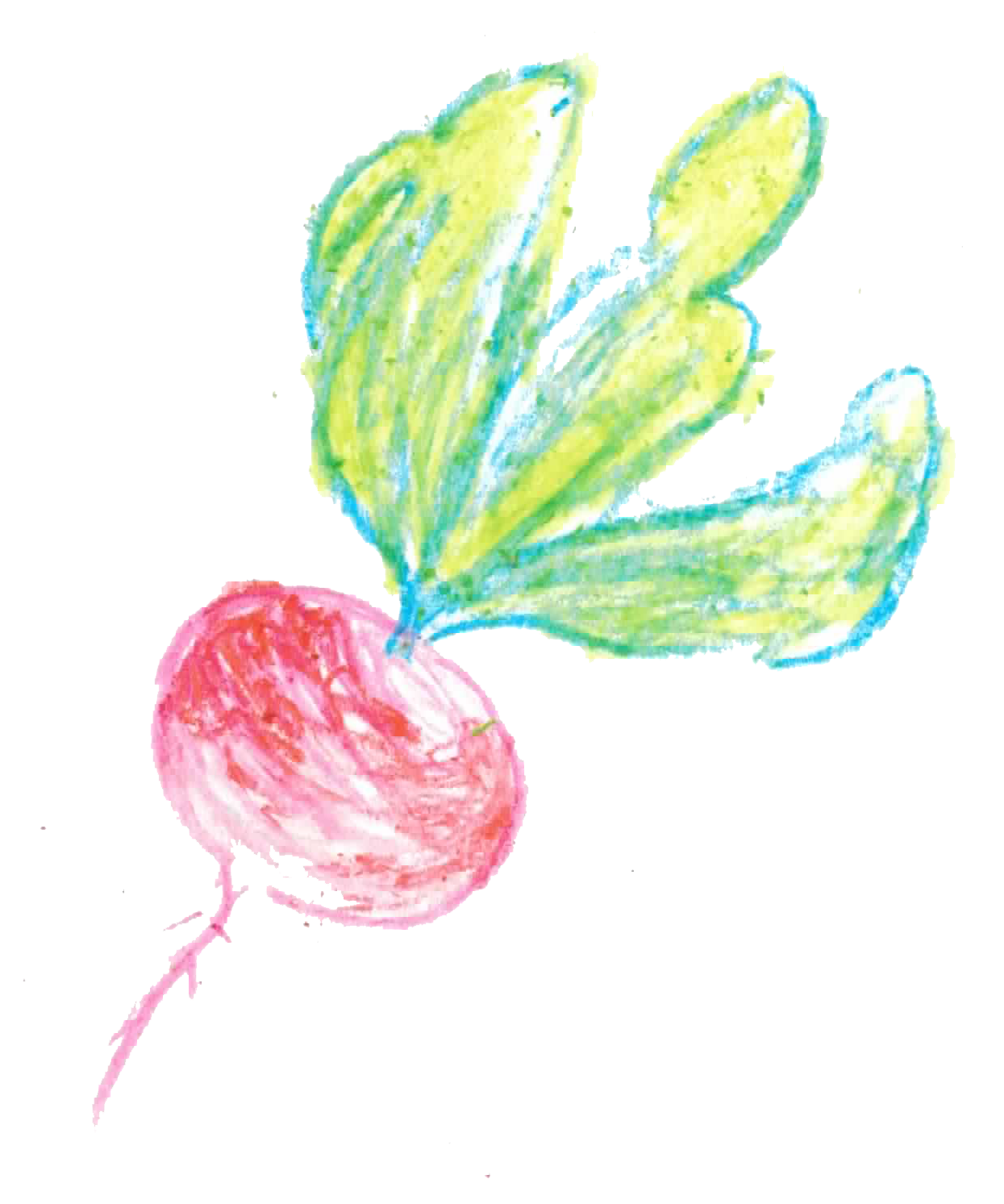
Midwinter is when I start to organize and sort through my seeds. In the fall when I’m harvesting everything I’m more focused on collection than organization. During the winter solstice season I take a break and by midwinter I’m usually itching to jump back in and sort seeds, plan gardens and look through all the seed catalogs. This is the snowiest time of year in my area and not at all the time to start seeds, but it’s the best time to dream and scheme for spring which is honestly one of the best parts. It’s also the time of year that I invariably find a bunch of random bags and jars of unlabeled plant parts that I swore I would remember the purpose of but which I promptly forgot.
Getting kids involved in garden planning can look a lot of different ways. It can be as simple as drinking herbal tea and looking through seed catalogs together, all the way through drafting plans and using square foot math. (Garden planning makes an excellent math/ science/ art unit) I have included one of my favorite math lessons below, but it’s just scratching the surface. The act of cleaning and sorting seeds can be really engaging for kids as well. Popping dry beans out of their shells is a favorite activity in my house. Making and decorating seed envelopes is another fun way to involve kids. Encourage them to record the stories of the seeds they collect!
Some people like to bless their seeds this time of year which isn’t really my bag, but we do sometimes make seed artwork or thoughtfully place crystals with the seeds and wish them well.


Garden Planning Math
Use addition, subtraction, drawing to solve word problems in the garden and plan for the spring.
Make a Garden Bed 10 or 20 Frame:
Students measure and mark out a 10 (or 20) frame on a raised garden bed with sting or sticks. You probably won’t end up with even squares, so practice measurement and division as you set up teh 10 frame. (Or set the frame up for younger children and skip to the next step.)
Make Vegetable Cards:
Ask children to draw each type of vegetable you are considering planting. Scan or copy the drawings and print multiples of each on cardstock (or laminate them to make them studier. Alternatively you can paint rocks to look like various vegetables.
Practice Garden Math:
Consult a spacing chart to determine how much room each type of plant needs. (For the record I don’t actually like Square Foot as a gardening method, but it’s great for math lessons!) Then calculate how many of each type of plant will fit in each section of your garden 10 frame and lay your cards out in the garden bed.
Word Problems (tailor these to your student/ space/ likes):
Create and solve word problems using the spacing information. Use the garden bed 10 frame to show their work.
1. Suzy wants to plant half of the garden bed with kale. How many kale plants will she need?
There are 20 sections in one garden bed. What two equal numbers add up to 20?
How many kale plants will fit in 19 inches of space?
If Suzy can fit ___ kale plants per section and she has ____ sections to fill, how many plants will she need?
2. Mark has 20 radish seeds to plant. He gives Milo 7 seeds to plant in another section. How many seeds does Mark have left for his section?
3. There is one collard green plant in each section of the garden bed. (lay cards out on bed in each section) How many collard green plants are in each row? How many columns are there? How many total collard green plants are there?
Next Steps:
Once you have calculated how many plants of each type they can fit per section, have a discussion about how much of each type of vegetable/ fruit they’d like to grow and eat. Lay out your cards and decide which plants should go in each section. Make adjustments based on the spacing you have calculated. Once you have decided on a layout, ask students to draw up the plan.


[…] Garden Planning with Kids at Midwinter […]
[…] live somewhere where you can begin planting seeds, or some place where you can start dreaming and planning for spring planting. Seeds feature in traditional foods and many like to bless or honor their seeds at […]